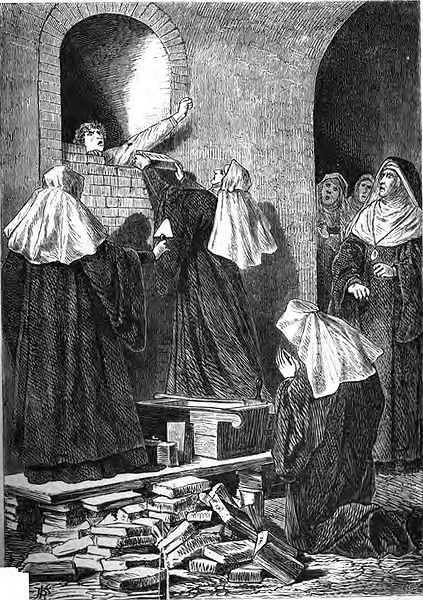In some European cultures it was customary to place the dried or desiccated body of a cat inside the walls of a newly built home to ward off evil spirits or as a good luck charm. It was believed that the cats had a sixth sense and that putting a cat in the wall was a blood sacrifice so the animal could use psychic abilities to find and ward off unwanted spirits. Although some accounts claim the cats were walled in alive, examination of recovered specimens indicates post-mortem concealment in most cases.
Dried cats and rats from the Stag Inn, All Saints Street, Hastings.
Immurement, also called immuration or live entombment, is a form of imprisonment, usually until death, in which someone is placed within an enclosed space without exits. This includes instances where people have been enclosed in extremely tight confinement, such as within a coffin. When used as a means of execution, the prisoner is simply left to die from starvation or dehydration. This form of execution is distinct from being buried alive, in which the victim typically dies of asphyxiation. By contrast, immurement has also occasionally been used as an early form of life imprisonment, in which cases the victims were regularly fed and given water. There have been a few cases in which people have survived for months or years after being walled up, as well as some people, such as anchorites, who have volunteered to be immured.
Re-creation of a 16th-century knight, who was believed to be entombed in a wall of Kuressaare Castle, Estonia
Ruins of Thornton Abbey
Perlachturm with St. Peter by Perlach
Immurement of a nun (fictitious depiction in an illustration from 1868)





